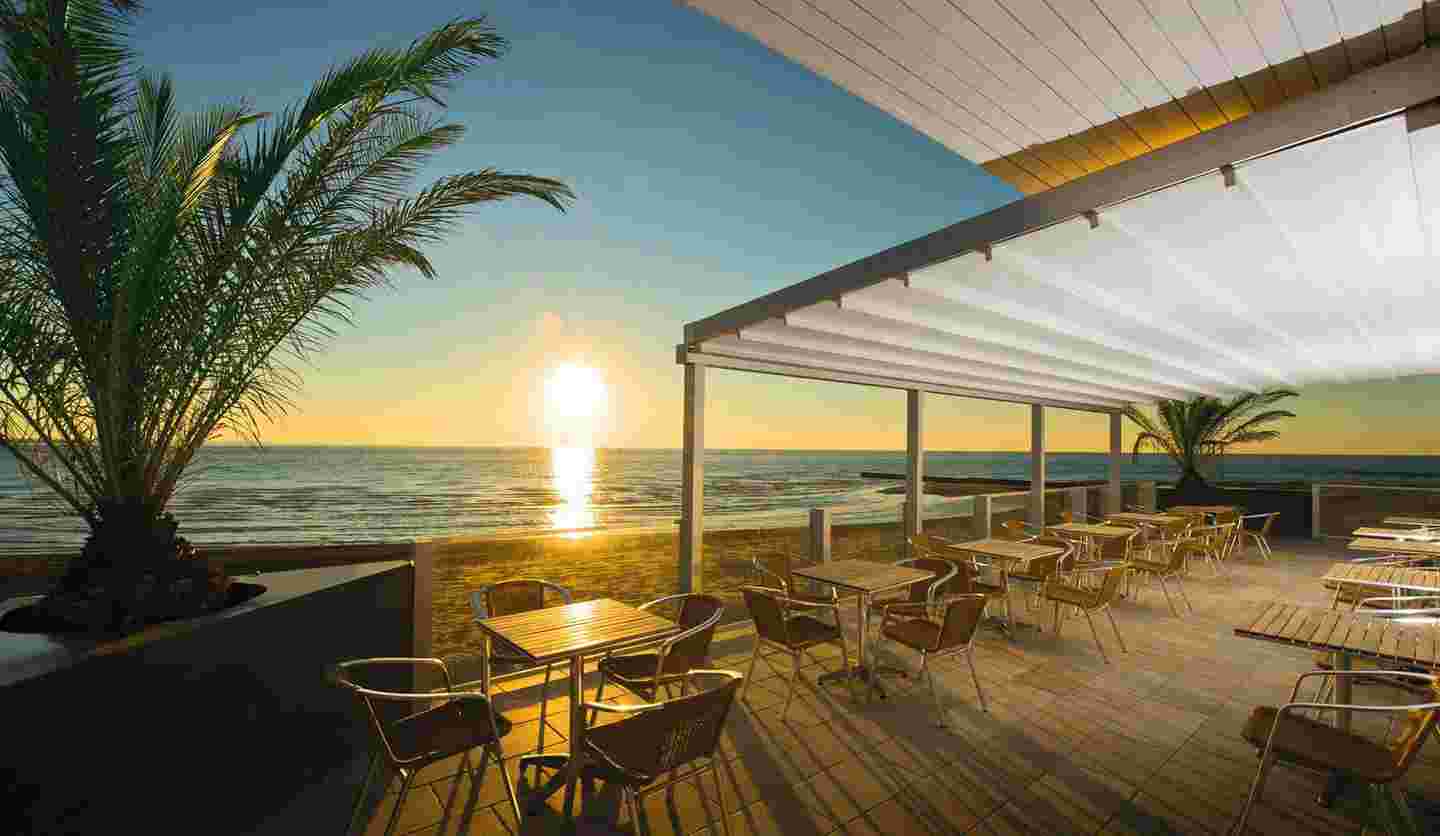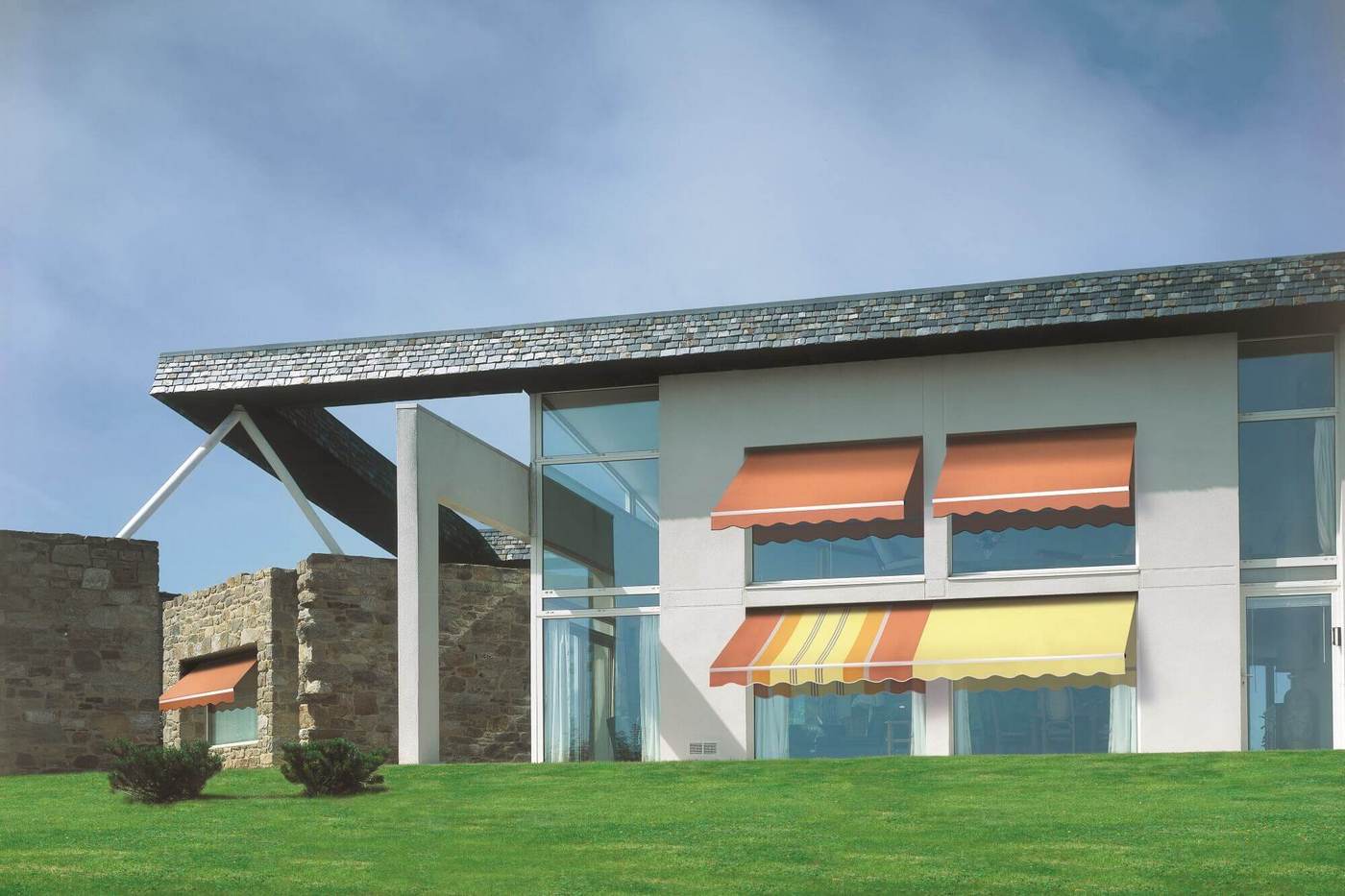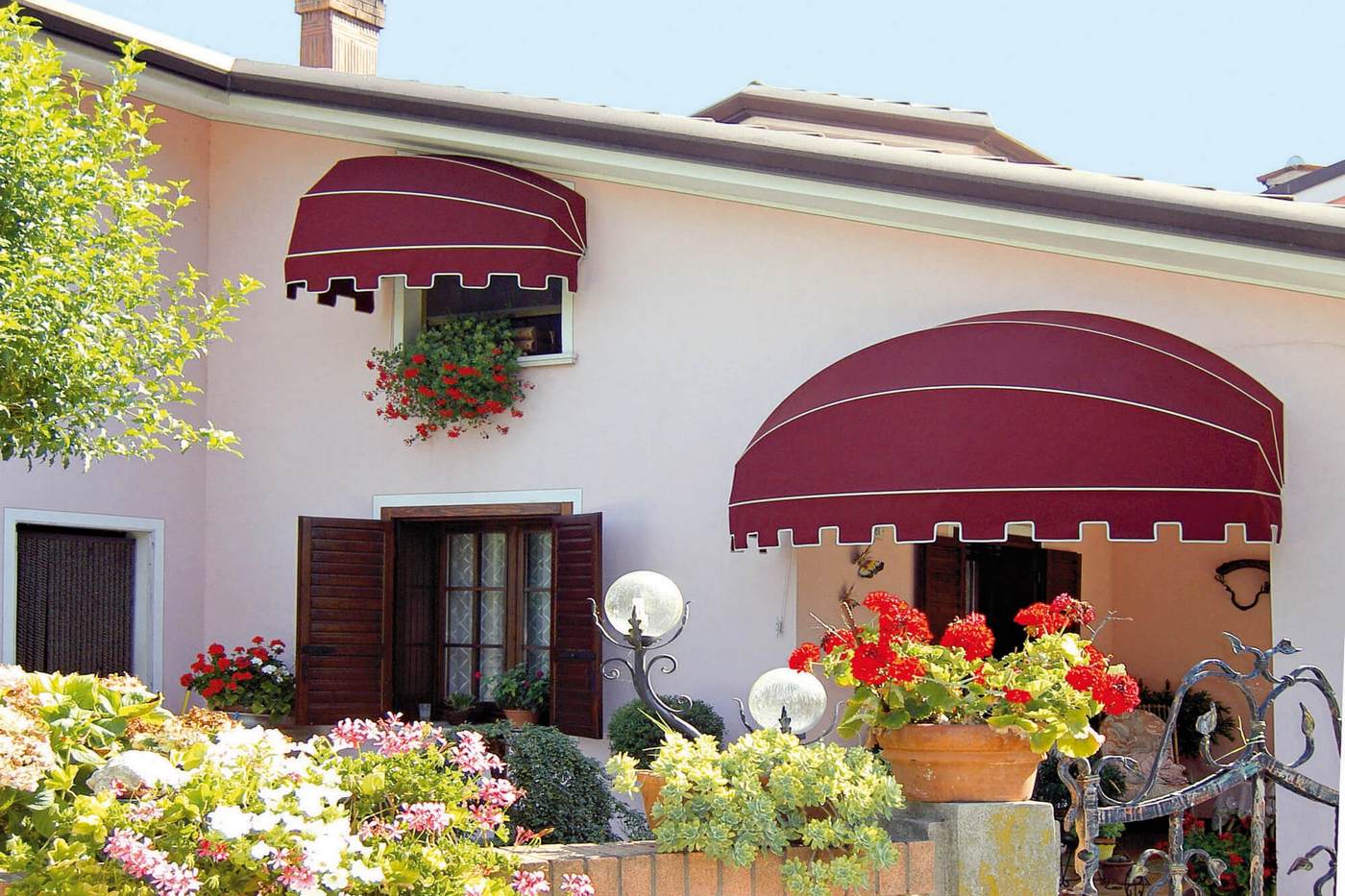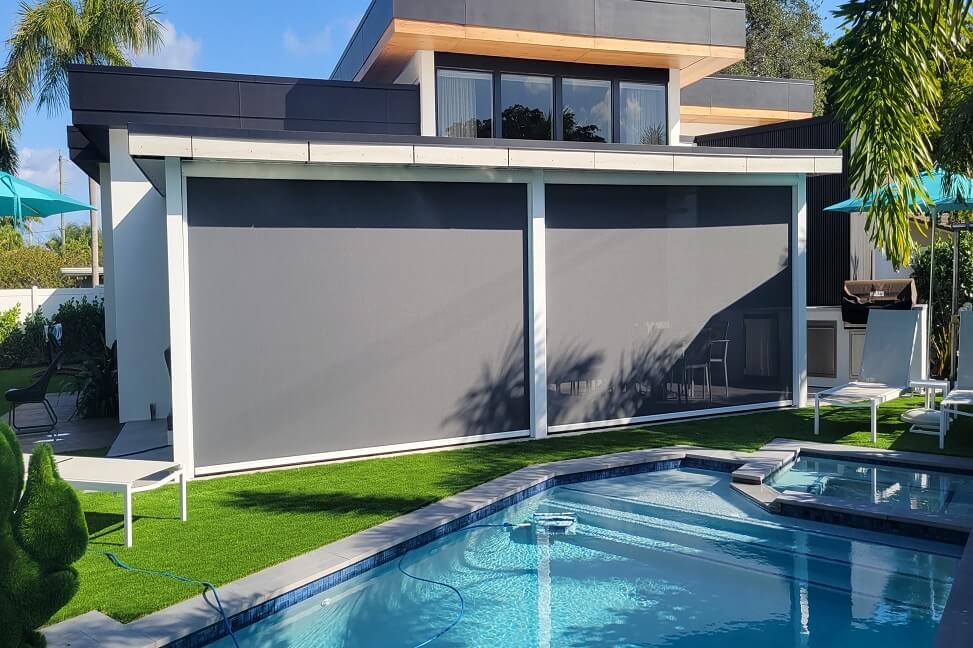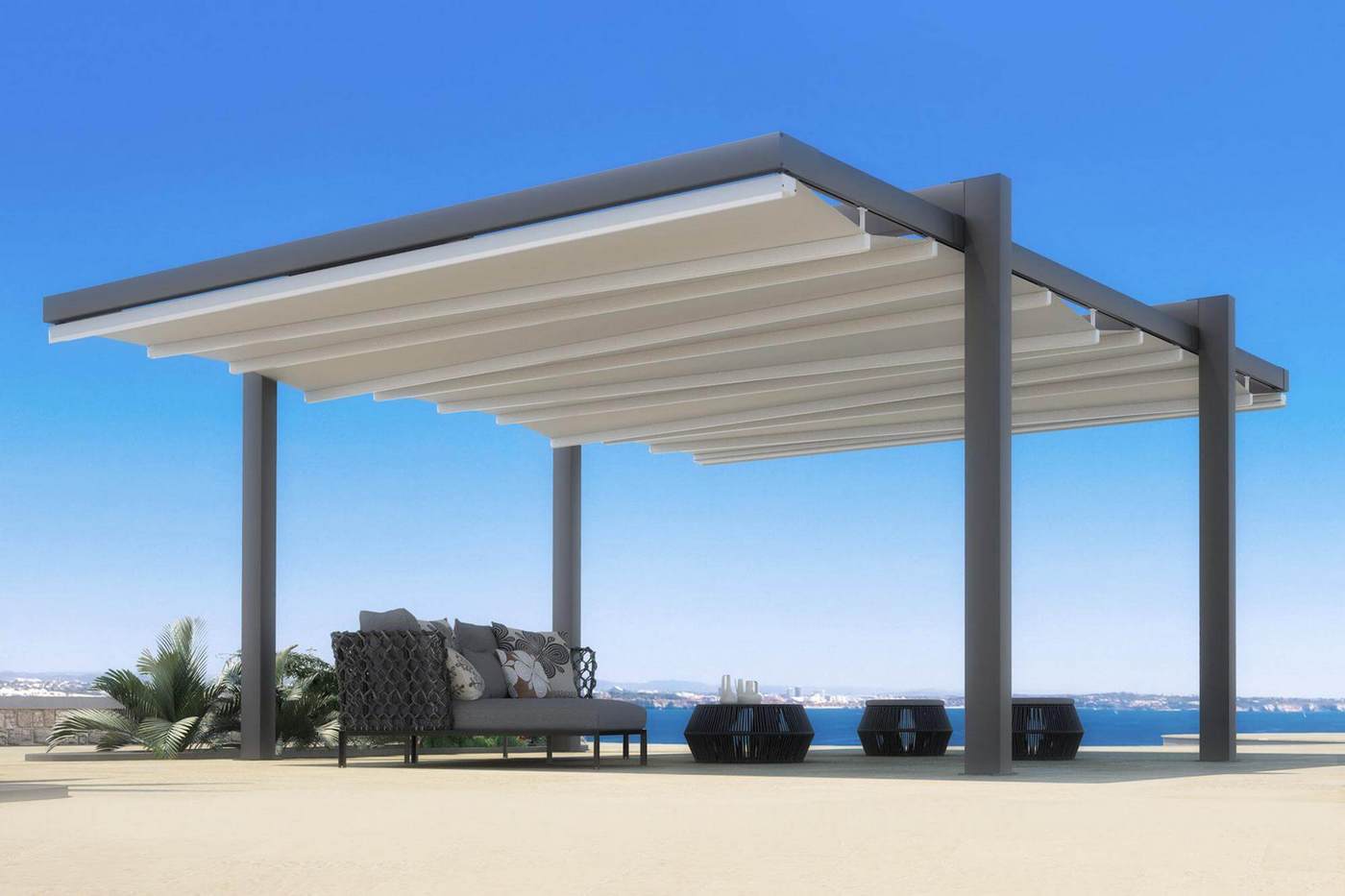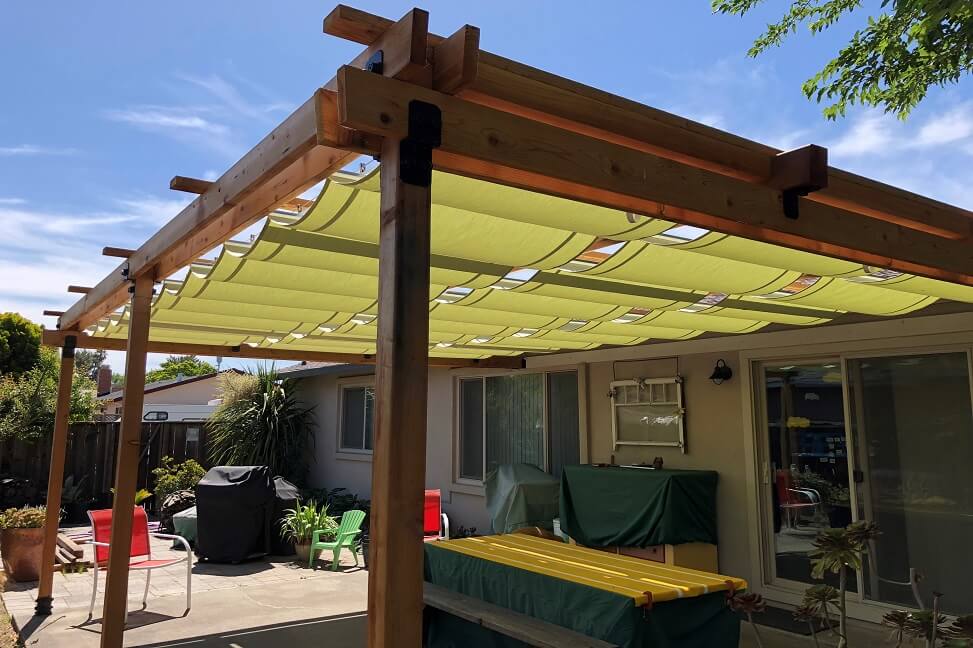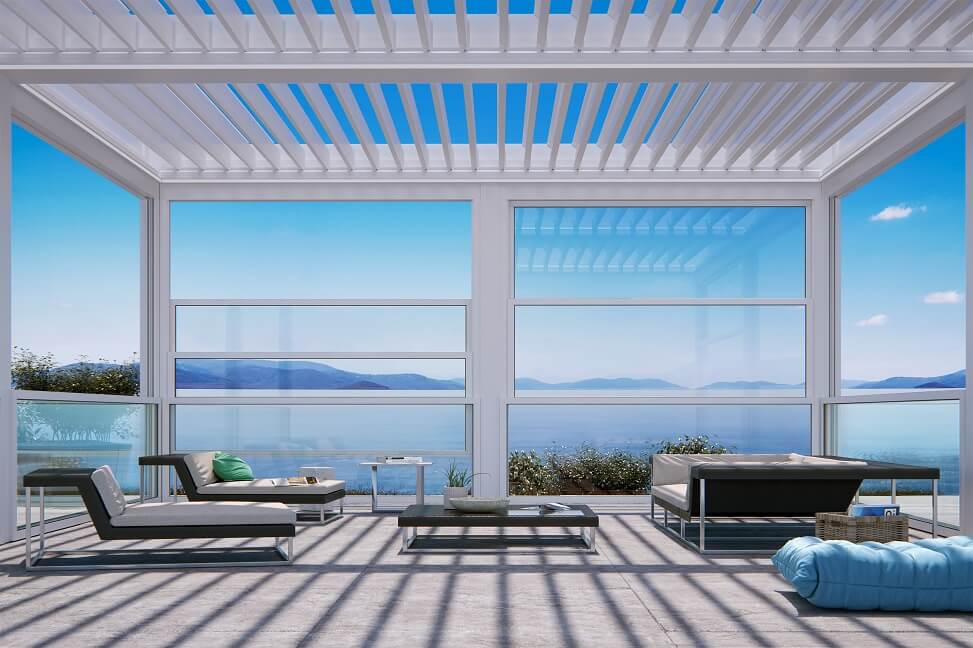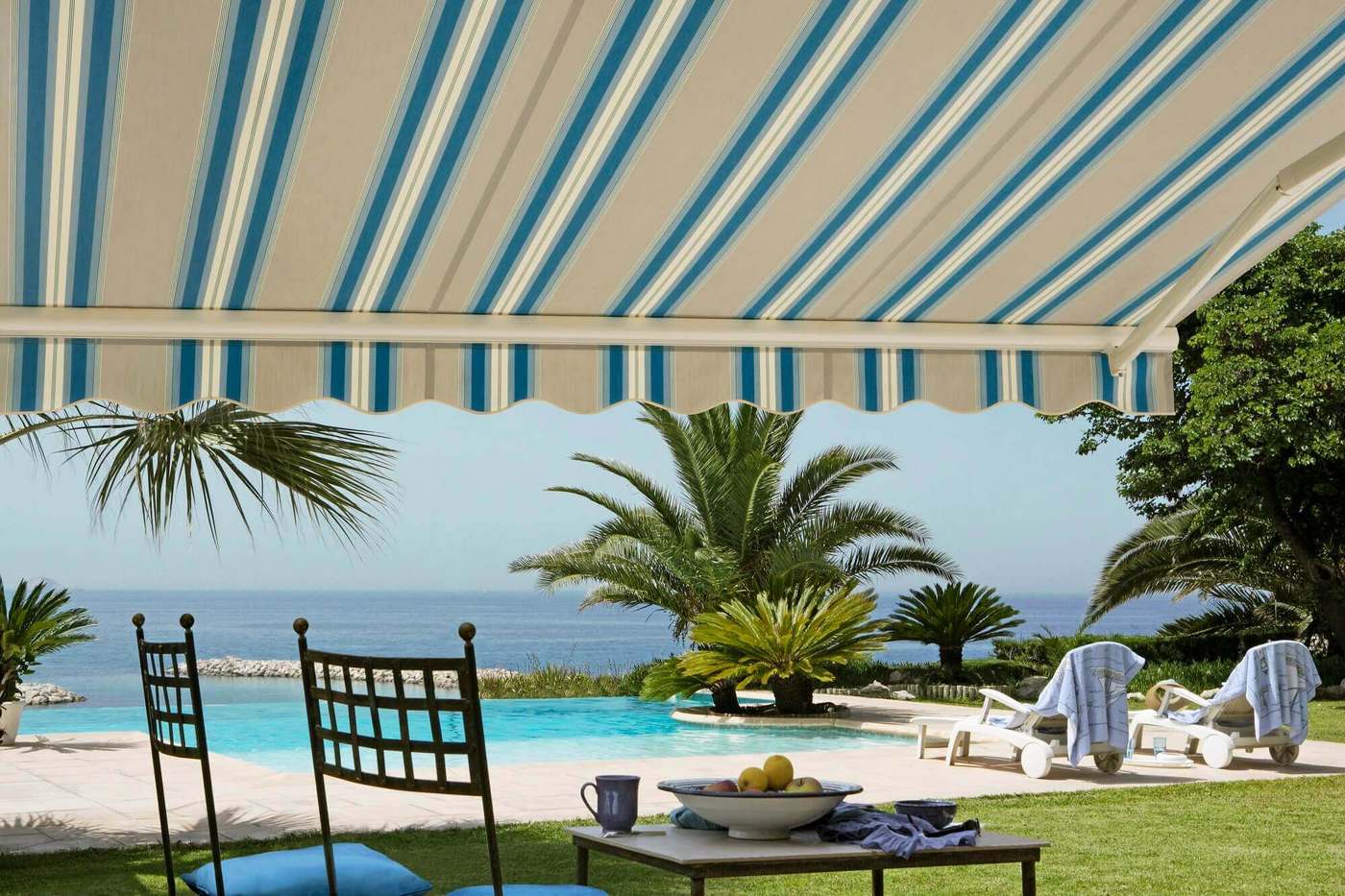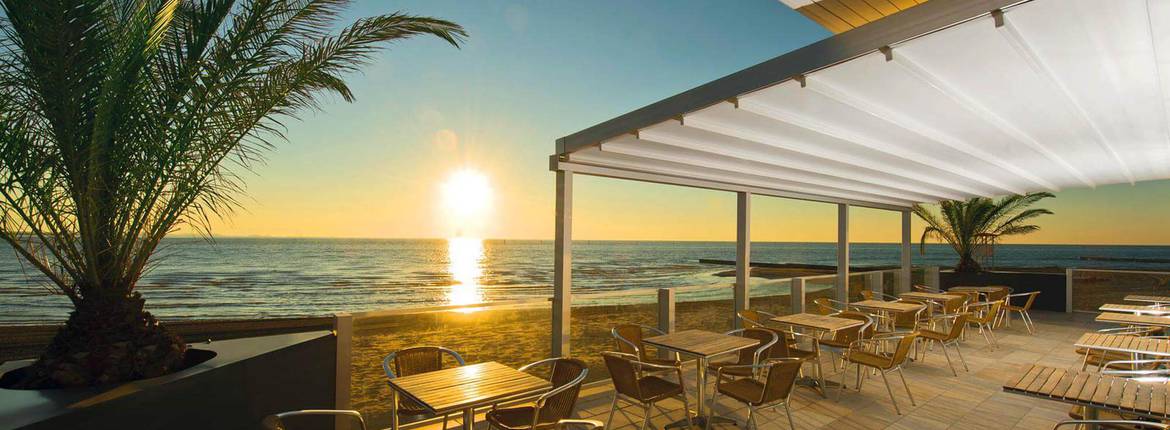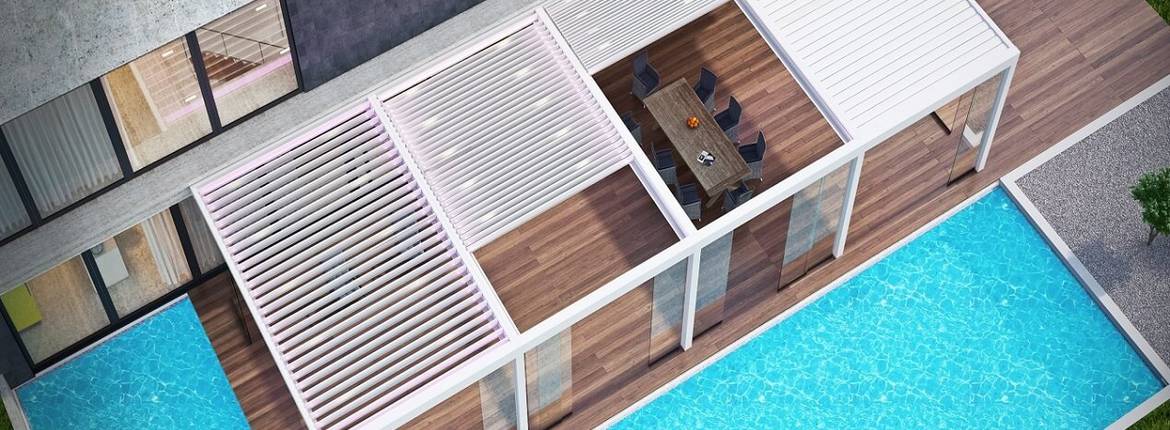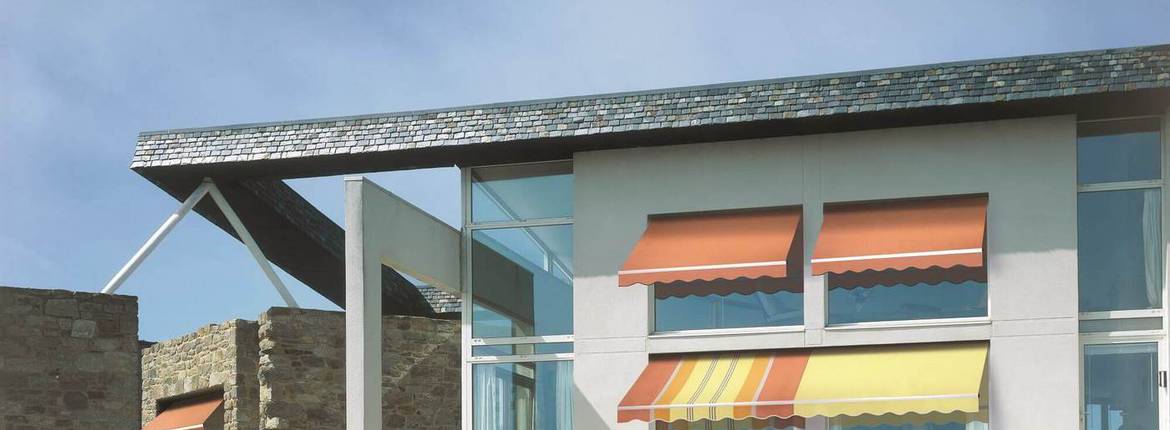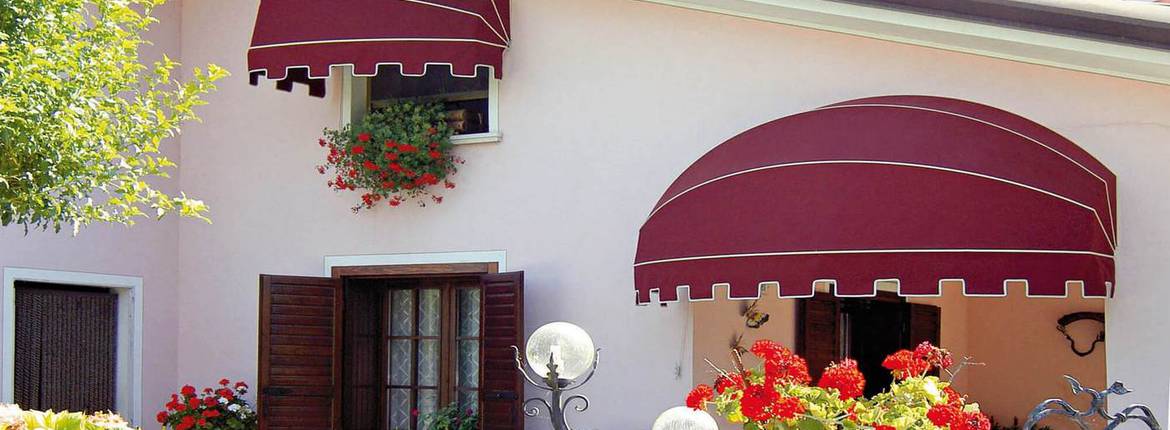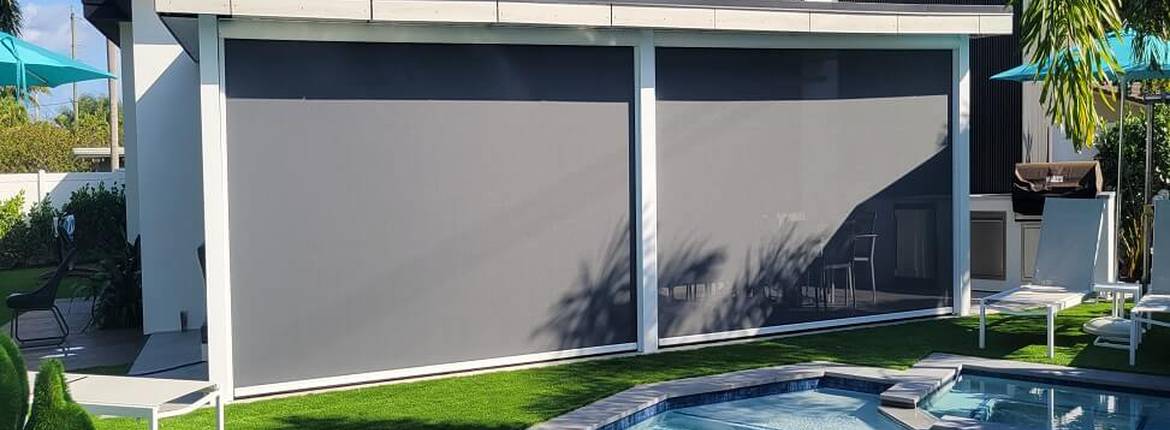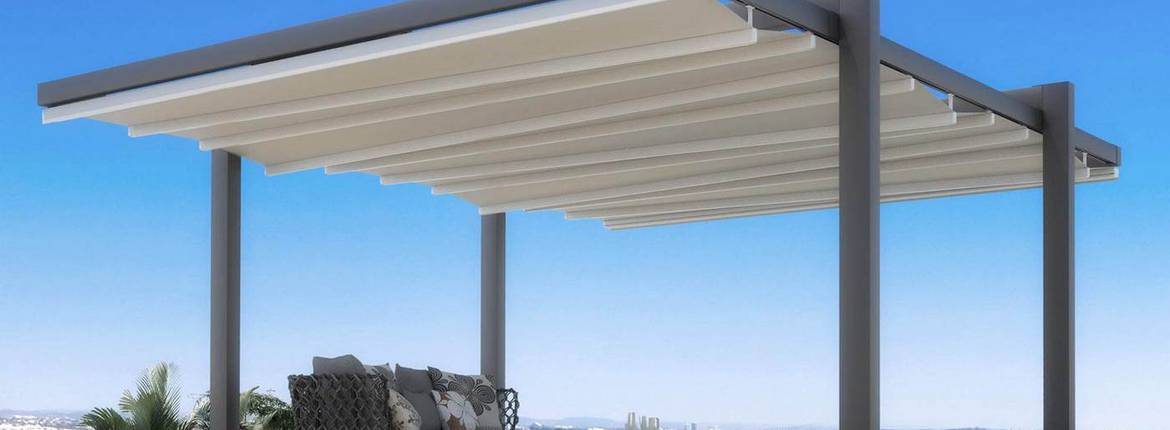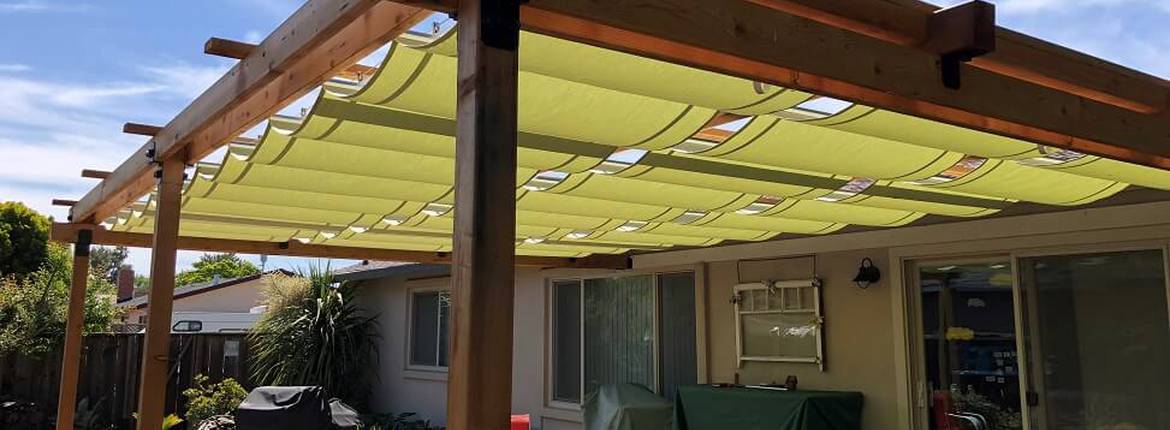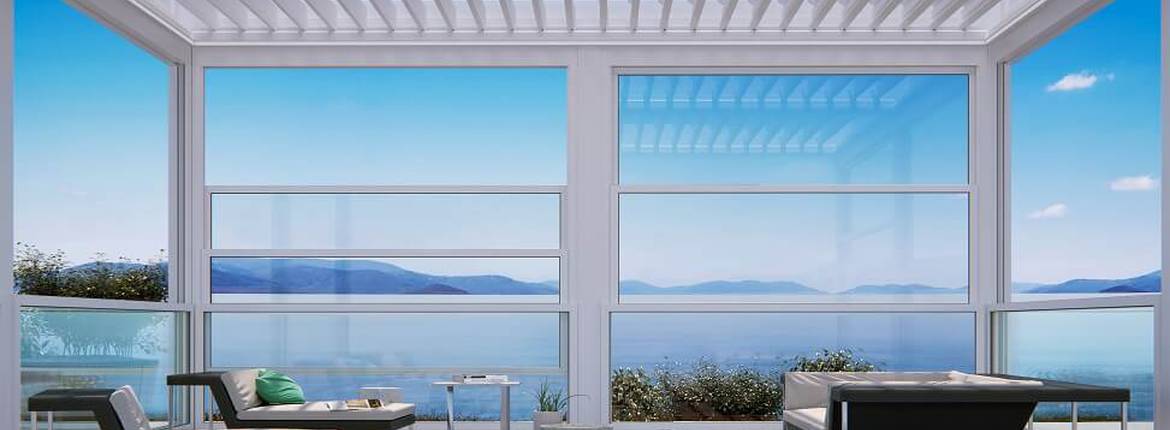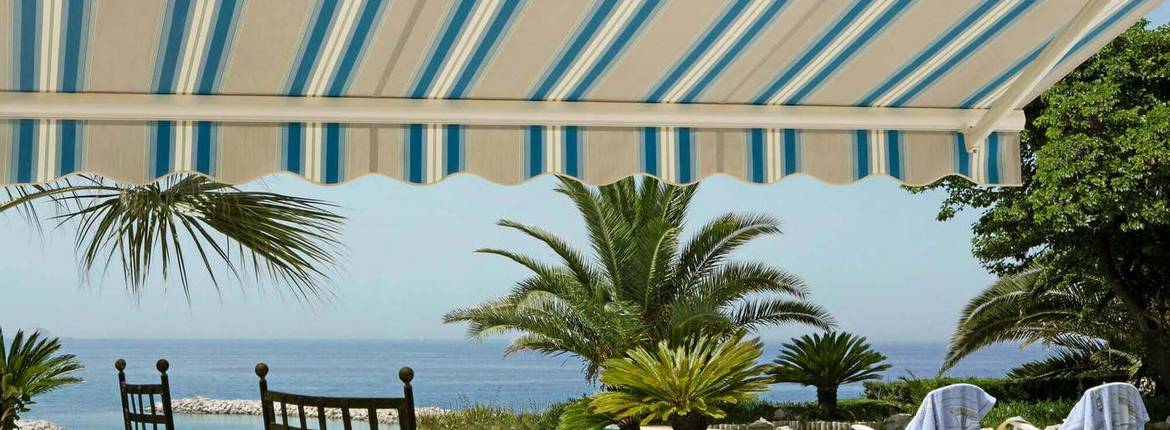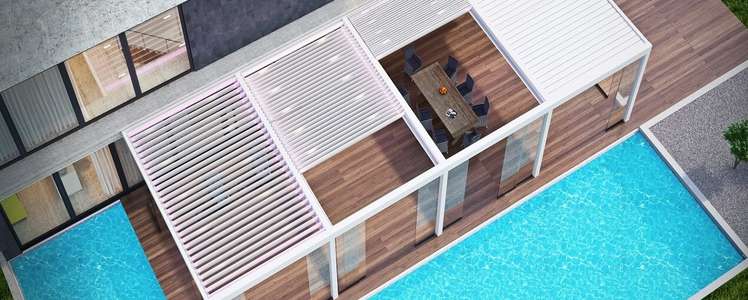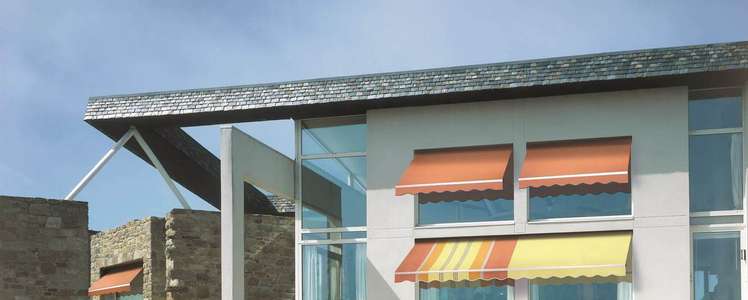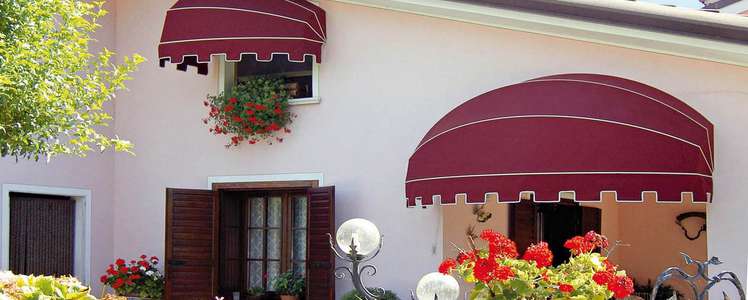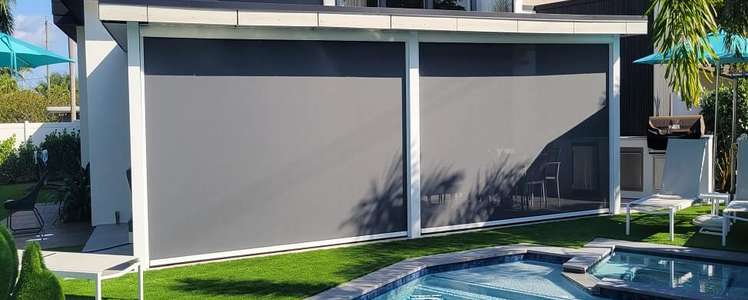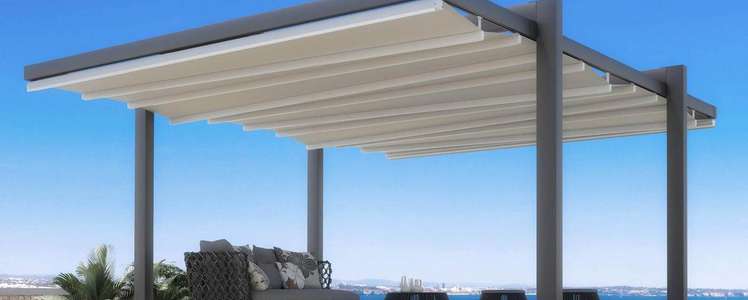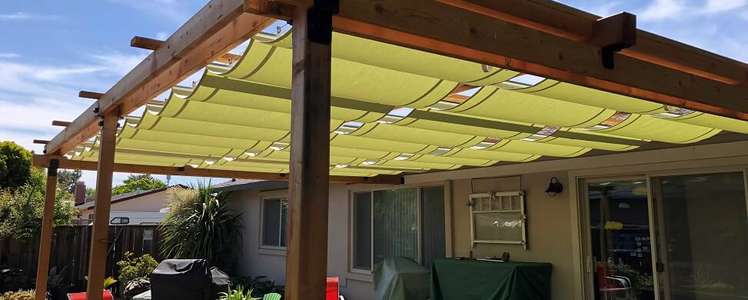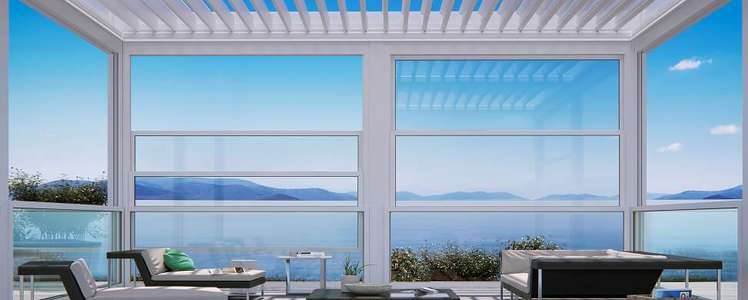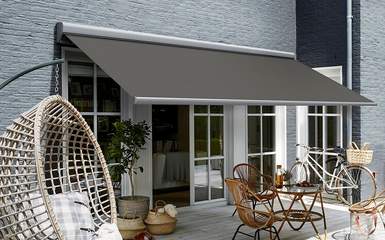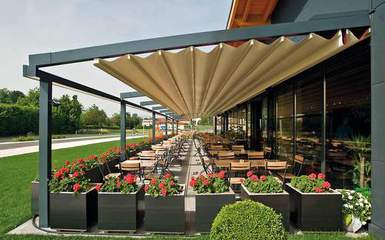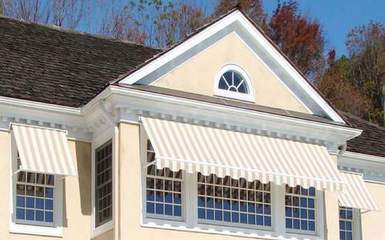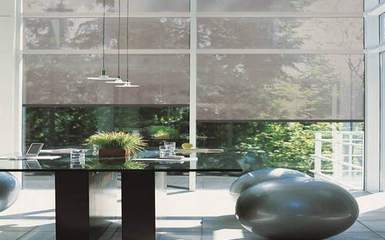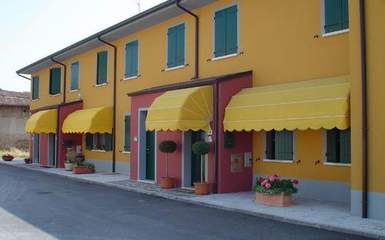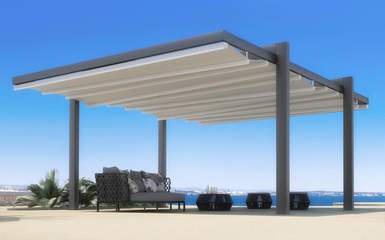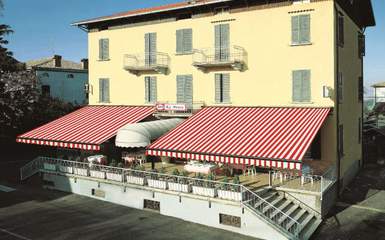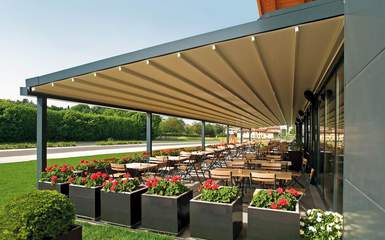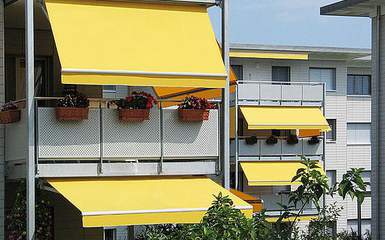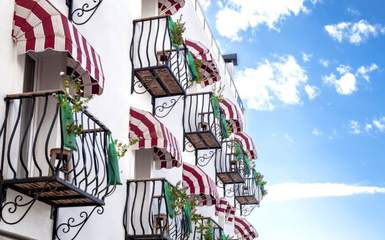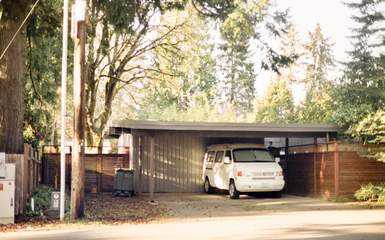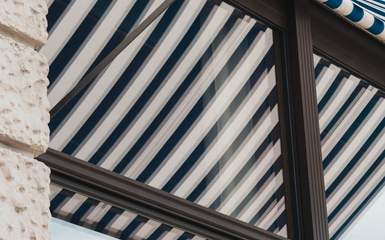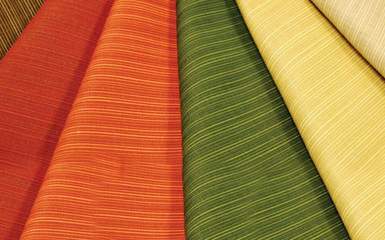Fabric awnings can be retractable or fixed/permanent/stationary and are used in commercial and residential locations. Regular maintenance, washing, and reapplying protective coatings are some of the ways you can protect your investment.
This post will address:
- Fabric Cleaning Solutions
- Cleaning Supplies
We will also address removing stains, and the care of vinyl, acrylic, and natural fiber awning fabrics.
This post will be of value to home and business owners looking to maintain their fabric awnings, and thus their investment, and also those charged with maintaining fabric awnings.
Cleaning awnings and fabric care are important parts of maintaining your awning so it will continue to offer shade and protection from the weather for years. Your awning may be a retractable model that retracts into a cassette or is covered by a hood cover to protect it when attached to a wall with no soffit, fascia, roof, or beam. A non-retractable model's fabric is permanently stretched over a frame and always exposed to the elements 24/7, reducing the fabric's longevity, one of the reasons our company specializes in retractable products only. For a detailed, side-by-side comparison that shows why retractable is preferred/recommended over fixed/stationary, click here.
Regardless of the style, you need to regularly clean outdoor fabric awnings. The canopy experiences temperature extremes and rain. It is exposed to airborne pollutants, dirt, grease, bird droppings, insects, leaf tannins, and tree pitch, plus other substances that can stain or bleach cloth. The rain may wash some off; however, dirt can get into the weave and cause the growth of mold. Covers rolled up damp, will most likely lead to fabric mildew, even fixed material may stay damp and develop mildew. Knowing how to clean awnings made of canvas and other materials like solution dyed acrylic for example can help to protect their lifespan.
Awning fabric may be made of synthetic materials like acrylic and vinyl, or from natural materials like cotton, hemp, and linen. Not all fabrics are cleaned with the same soaps or techniques, and some materials need to be re-coated with water-resistant or waterproof and mildew-resisting solutions. You can hire a professional to do this or do it yourself as long as you follow the fabric manufacturer's cleaning instructions.
Fabric Washing Solutions
Washing your awning can be a fun summer day activity, or there are professional services available that will do it for you. There are some washing solutions and supplies you can purchase, or you can prepare your own. Before you wash an acrylic, canvas, or vinyl residential or commercial awning, test the cleaning solution in an area that isn’t visible to make sure it won’t damage the material.
Note: The following homemade solutions work for natural materials, acrylic, and vinyl. However, some are noted for the acrylic and natural fabric but not vinyl. Always make sure to check the cleaning solution on a small area before using it.
How To Clean The Topside
Awnings made of canvas or fabric should be washed with an appropriate solution that helps to protect the material and colors. The frequency of washing may vary, but in general residential awnings should be washed once a year and commercial ones every 4 to 8 weeks depending on their location. Some canopies are small and can fit in a washing machine, but most won’t. Before washing the awning, sweep off leaves, cobwebs, and other loose dirt.
Use a mild eco-friendly liquid soap recommended for the type of fabric in your canopy – the manufacturer’s instructions often have recommendations. A bucket of cold to lukewarm water with dish soap and a soft bristle brush works; a pressure washer set very, very low, or a hose works too. Wet the awning, then start cleaning at the bottom edge and work up. Use sweeping motions with the brush or power washer on a very, very low setting but let the soap work in and lift the dirt out. Rinse from the top down, and thoroughly remove the soap and dirt. Let the material dry before retracting. This is important to protect the fabric from mildewing, as rolled-up wet fabric cannot breathe.
How To Clean The Underside
The underside of canvas awnings should be cleaned in the same way you clean the topside. It’s a good idea to wash and rinse the metal frame too. Since the underside may be exposed to a variety of activities, like children playing, dining, or cooking, it collects different types of dirt. The underside may collect grease from open windows, vents, and BBQs, so use grease-cutting dish soap if necessary.
Cleaning Grease And Sprays Off Of Canvas Or Fabric Awnings
Cleaning cooking grease, sunscreen oil, bug sprays, and other chemicals can be done with mild dish soap mixed with water. This solution should remove the dirt, and then wash and rinse it away. If you somehow get automotive grease on natural or acrylic, use acetone to remove it, and then wash and rinse the area well. On vinyl, gently scrape or wipe the grease off. Blot the area with a dry cloth. Use dish soap and gently rub it into the area and then rinse well with warm water.
Cleaning Paint Off Of Canvas Or Fabric Awnings
If you get paint on the fabric while touching up window frames or other trim, don’t worry; it does clean up. Dab oil-based paint dry as much as possible, then use paint, oil, or grease remover on natural and acrylic material, and an orange-based citrus cleaner on vinyl. Work it in with a soft brush, and then wash it with dish soap and rinse well. For water-based (latex) paint use a concentrated drop of liquid soap, work it into the paint, and then rinse thoroughly. Repeat if necessary.
How To Clean Stains Off Of Canvas Or Fabric Awnings
Cleaning leaves, fruit from trees, mildew, and algae off of your canopy is important. There are tannins and oils in many leaves which can seep into the fabric and may be difficult to remove. The sooner the leaves are removed, the better. Wash the stain with an organic stain remover; you may want to let it sit on the stain for up to 30 minutes before gently washing and thoroughly rinsing – possibly twice. If that doesn’t work, try a solution of ammonia and water or bleach and water.
Note: Never mix ammonia with bleach as it creates a poisonous chlorine gas.
Cleaning fruit stains off of awnings may be done with a dish soap and 3-6% ammonia mixture in water. Rub it in with a soft bristle brush or even your finger. Let sit for a couple of minutes, and wash and rinse the area well. Mildew requires ½ cup of bleach mixed with ¼ cup of dish soap in a gallon of water. Brush the mixture in, then wash and rinse completely. For algae stains mix 6 parts water with 1 part hydrogen peroxide and put in a spray bottle. Spray on the stain, wait 30 minutes, and then rinse off. Repeat if necessary. To help prevent the return of algae, mix equal parts of vinegar and water, spray it on the fabric, and let it dry.
How To Clean Tree Pitch Off Of Canvas Or Fabric Awnings
Cleaning tree pitch off of acrylic or natural materials can be done with a mixture of turpentine and liquid dish soap. To remove sap from vinyl, use a grease remover or rubbing alcohol on a soft cloth. Work it gently into the pitch; you want to soften the sap, not spread it around. Wash the area with mild soap and water. Repeat if necessary – possibly 2 or 3 times depending on how thick the patch of pitch is.
Cleaning Rust Off Of An Awning
Iron oxide or rust results when a fitting, bracket, or other part that is made primarily of iron reacts chemically with the oxygen in the atmosphere. This can be slowed down by painting or coating metal parts, but humidity has a way of penetrating even the best coatings and attacking the material underneath, whether it is a fixed or retractable awning product. When wet, rusty water may drip on the canopy material and leave a blemish. You may wash this off with a mixture of water and citric acid or oxalic acid for removal. Gently work the solution into the area you want to clean, and then wash and rinse.
How To Clean Bird Droppings Off Of Canvas Or Fabric Awnings
Cleaning bird droppings quickly will help keep berry juice – a common component of bird waste – from staining the canopy material. Treat the dropping, and then the berry stain if necessary. Scrape as much of the excrement off as you can with a plastic spoon. Mix dish soap with water in a bowl. Wet a soft cloth and dab the area. Blot with a dry cloth, and repeat until gone. Use a mixture of equal parts ammonia and hydrogen peroxide on stubborn spots. Blot with clean water when done, and let dry.
Don’t Forget Retreatment After Washing
After washing, the acrylic or natural fiber of the canopy should be retreated to maintain the full benefits of your investment. Retreat to prevent mildew, block UV, and waterproof the material or return its water resistance.
Awning Cleaning Supplies
There are numerous commercial cleaning solutions you can buy. Some state they are for vinyl and others for acrylic and natural materials. There are general cleaning solutions and also specialty products for stains. You can purchase these supplies or look around your house and make your own. Regardless of the cleaner, you will need a soft bristle brush, 2 to 5-gallon pail, several soft cloths, and an empty spray bottle. A pressure washer or hose may help too. Here are some cleaning product suggestions.
Combine dish soap and cold-to-lukewarm water in a bucket. There are many commercial products available from $8 up to $60.
Kitchen dish soaps are good at cutting cooking grease and most other sprays that people use on themselves. Commercial fabric awning cleaners will clean up grease and sunscreen too.
Use acetone or dish soap on natural or acrylic fabric, and dish soap on vinyl canopies. If selecting a commercial product, ensure it is for the material being cleaned.
Dish soap to clean, and water to rinse.
Use commercial paint, grease, or oil remover on natural or acrylic covers. Orange citrus cleaners work for vinyl.
Cleaning soiled awnings with an organic stain remover is the first step, and then washing with dish soap and water. Rinse thoroughly. Alternatively, use a mixture of ammonia and water, or a mixture of bleach and water on stubborn stains.
Dish soap and 3-6% ammonia mixture in water.
Mix ½ cup of bleach with a ¼ cup of dish soap in a gallon of water for acrylic and vinegar in water for vinyl fabric.
Mix 6 parts water with 1 part hydrogen peroxide and put in a spray bottle for natural and acrylic fabrics, and vinegar-water mixture.
Tree pitch can fall on any awning, and cleaning it off can be a constant issue depending on where you live. Tree sap or pitch is sticky, and some trees are worse than others. Pitch can penetrate acrylic and canvas fabric, and knowing how to clean it off of awnings, pergolas, and canopies is a good skill to cultivate. For acrylic or natural materials, mix turpentine and liquid dish soap. Use a grease remover or rubbing alcohol on vinyl.
Mix citric acid (lemon juice), vinegar, or oxalic acid with water for vinyl, acrylic, or natural fabrics.
Mix dish soap with water.
General Awning Cleaning
If you cannot find a specific commercial cleaner, you can make your own. Use laundry soap or dish soap and cold water for a general cleaning solution that is good for natural and acrylic fabrics. Use dish soap and cold water for vinyl fabrics.
| Stain Type |
Natural Fabric |
Acrylic Fabric |
Vinyl Fabric |
| Cooking Grease & Sunscreens |
Dish soap & cold water or Commercial Cleaner |
Dish soap & cold water or Commercial Cleaner |
Dish soap & warm water or Vinyl Commercial Cleaner |
| Automotive Grease |
Acetone or dish soap |
Acetone or dish soap |
Dish soap |
| Latex Paint |
Dish soap & water |
Dish soap & water |
Dish soap & water |
| Oil Paint |
Commercial paint, grease, or oil remover |
Commercial paint, grease, or oil remover |
Dish soap |
Cleaning Awnings With Stubborn Organic Stains
Knowing how to clean canvas and acrylic awnings that have these types of stains is a good skill to cultivate and can be used on many surfaces.
| Stain Type |
Natural Fabric |
Acrylic Fabric |
Vinyl Fabric |
| Leaf Tannins & Oils |
Organic stain remover, ammonia and water or bleach and water |
Organic stain remover, ammonia and water or bleach and water |
Organic stain remover, ammonia and water |
| Fruit Stains |
Dish soap and 3-6% ammonia mixture in water |
Dish soap and 3-6% ammonia mixture in water |
Dish soap and 3-6% ammonia mixture in water |
| Mildew |
Bleach & dish soap mix in water |
Bleach & dish soap mix in water |
Vinegar & water or a quality commercial cleaner |
| Algae Stains |
Hydrogen peroxide in water |
Hydrogen peroxide in water |
An awning cleaning solution of 30% vinegar and 70% water |
| Tree Pitch |
Turpentine and dish soap |
Turpentine and dish soap |
Grease remover or rubbing alcohol |
| Rust |
Citric acid, vinegar, or oxalic acid with water |
Citric acid, vinegar, or oxalic acid with water |
Citric acid, vinegar, or oxalic acid with water |
| Bird Droppings |
Dish soap & water |
Dish soap & water |
Dish soap & water |
After Cleaning
Don’t forget the retreatment. An application of surface protectant may be required for adequate UV and mildew protection. Search online or contact the manufacturer, if necessary, for advice.
More Questions? Reach Out!
Cleaning awnings can be hard work. It is possible to overdo it and damage your canopy. If you get in trouble and find yourself wondering how to clean a canvas awning or another type of fabric, contact the manufacturer or a professional cleaning service for help.
There are commercial awning cleaning solutions available, or you can use common household products and make your own. No matter the product, always test it to ensure it won’t damage the fabric. Remember, after cleaning, the material should be retreated to protect it from mildew and UV rays and made water-resistant or waterproof (if needed) once again.
If you have questions about cleaning awning fabric or canopy care, or if you are looking for a quality retractable awning, pergola, canopy, shade sail or screen for your home or business check our catalog. If you have questions, drop us a line using the online contact form!
![Folding Arm Awnings Folding Canopies]()
![Retractable Pergola Covers Awnings]()
![Retractable Drop Arm Awnings]()
![Retractable Patio Screens and Vertical Drop Awnings]()
![Retractable Window Awnings]()
![Retractable Free Standing Awnings and Canopies]()
![Retractable Lateral Arm Awnings]()
![Retractable Pergola Roof Covers]()
![Retractable Side Arm | Drop Arm Awnings]()
![Power Retractable Screens]()
![Retractable Canopies for Commercial Buildings]()
